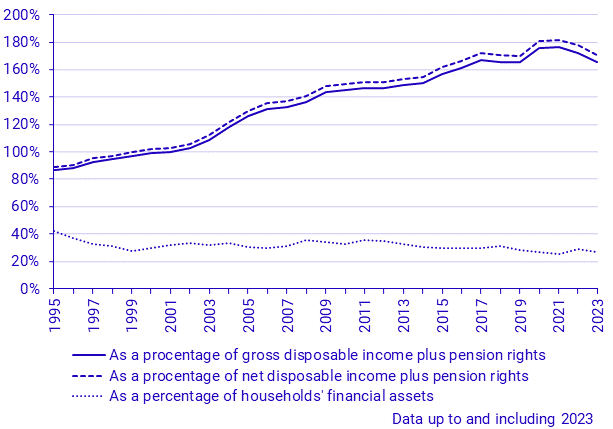Household loans
As a percentage of gross/net disposable income plus pension rights, and as a percentage of household financial assets.

Definitions and explanations
The diagram shows the borrowings of the household sector as a percentage of gross/net disposable income plus pension rights (B6G+D8.REC), and as a percentage of household financial assets. The difference between gross and net disposable income is the consumption of fixed capital. In other words, the consumption of fixed capital is subtracted from gross disposable income to obtain the net disposable income. In order to compare the disposable income of different countries, it is recommendable to use gross disposable income, since different countries can differ in the way they calculate consumption of fixed capital. E.g. Eurostat presents gross disposable income on its website. On the other hand, to describe the disposable income of a single country, it is recommendable to use net disposable income.